A dark brown to black thick-fleshed cup- or disc-shaped gelatinous fungi attached to the bark of decaying Oaks.
Home / Mushroom Guide /
Black Bulgar
Black Bulgar
| Mushroom Type | |
| Common Names |
Black Bulgar (EN), Batchelor’s Buttons (EN), Cwpanau Duon (CY), Prószyk Brudzący (PL), Kocsonyás Koronggomba (HU) |
| Scientific Name |
Bulgaria inquinans |
| Synonyms |
Tremella turbinata, Peziza turbinata, Ascobolus inquinans, Phaeobulgaria inquinans |
| Season Start |
Sep |
| Season End |
Mar |
| Average Mushroom height (CM) | |
| Average Cap width (CM) |
Please note that each and every mushroom you come across may vary in appearance to these photos.
Fruiting Body
0.5–4 cm across, cup-shaped at first, becoming more or less disc-shaped with age. Soft and gelatinous when young and moist. Often attached to the substrate with some sort of undeveloped stem-like structure.
The fertile inner surface (hymenium) is smooth to slightly wrinkled, shiny and brown to black, sometimes with blueish tinge. It is often covered with deposited spores.
Gills
Does not have gills but the outer surface/underside is scurfy to covered with tiny scales (squamulose), often dark brown, but more or less concolorous with the hymenium.
Flesh
Dark brownish, marbled, gelatinous.
Habitat
Grows in large numbers or very rarely solitary. Can be found in woodlands, parklands, mostly on recently fallen trunks or branches of oaks, sometimes beech trees, as long as the bark is intact. According to T. Læssøe and J.H. Petersen “probably an endophyte in the living trees”. Common and widespread in the UK.
Possible Confusion
Black Bulgar is a highly distinctive species, it is hard to confuse with anything else.
Witches’ Butter (Exidia glandulosa), pictured, has similar colour and jelly-like flesh, but it is much softer and has white spore print.
Beech Jellydisc (Neobulgaria pura, syn: Ombrophila pura), is much paler, translucent with some pinkish tinge when young, and it has strong preference for Beech.
Taste / Smell
Inedible. Smell and taste are indistinctive.
Frequency
Common.
Spores
Blackish brown. Smooth, broadly ellipsoid to kidney-shaped.


 (2 votes, average: 4.00 out of 5)
(2 votes, average: 4.00 out of 5)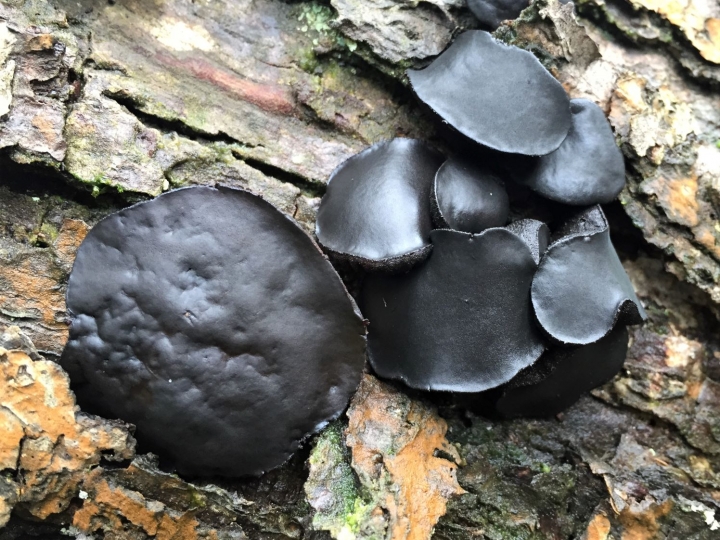
















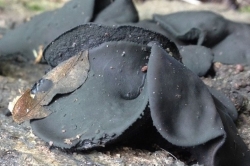
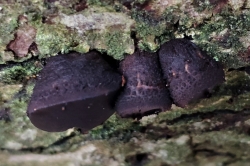
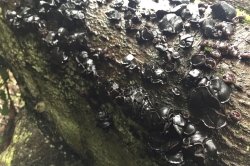
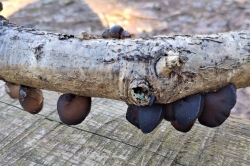






Leave a Reply